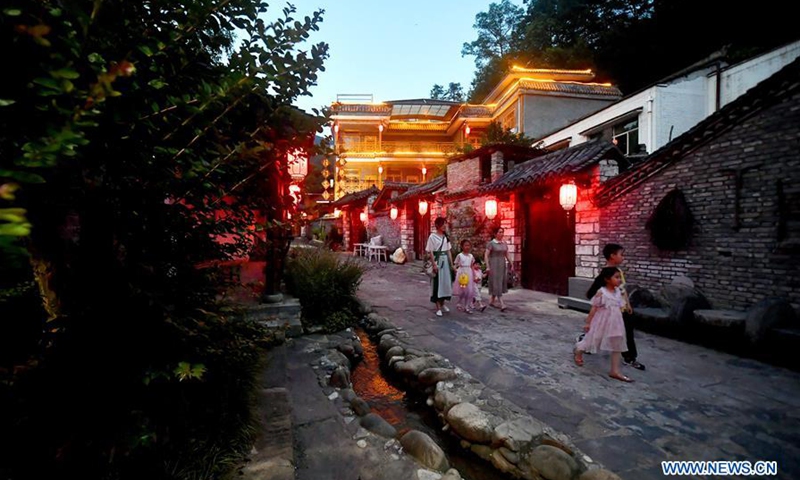Tourism service sites see soaring visits as Beijing lowers virus response level
By Li Xuanmin Source: Global Times Published: 2020/7/19 19:23:06

People walk past a guesthouse in Liuba County, northwest China's Shaanxi Province, July 3, 2020. Located in the southern foothills of Qinling Mountains, Liuba County of Shaanxi Province has a forest coverage rate of 91.23 percent. Taking advantage of its outstanding environmental conditions, the county has developed tourism and guesthouse industry.Photo:Xinhua
Beijing residents' search for tourism destinations and flights spiked by 400 percent at tour service platforms Sunday afternoon, after the capital city announced it will lower its emergency response to COVID-19 from level II to III starting Monday.
The lowered response level means that Beijingers will be allowed to go out of the city freely from Monday. The city has seen no new COVID019 cases in the past 13 days.
Instantly, hotel reservations surged by 400 percent at online tourism platform Ctrip, while the search for first-class air flights rose 220 percent, according to a statement Trip.com Group sent to the Global Times Sunday.
In particular, flights to Sanya, a coastal city in South China's Hainan Province, increased by 580 percent at Ctrip.
Outbound flights from Beijing surged seven times at ticket booking platform Qunar.com, within an hour of the city's lowering its COVID-19 response level. Flight reservations from Beijing to Shanghai roared at the website, followed by flights from Beijing to Sanya and Chengdu, capital of Southwest China's Sichuan Province.
Lan Xiang, president of the big data research institute under Qunar, told the Global Times that the easing measure not only triggered Chinese tourists' penchant enthusiasm, but also boded well for a "V-shape" rebound in air flights.
Lan expects 250 million Chinese to travel travel by air in the second half of 2020, surpassing the 150 million trips in the first half.
"I haven't traveled outside Beijing this year because of the strict anti-virus measures. Since the emergency response level is now lowered, I cannot wait to take a vocation in early August to Shenzhen, [in South China's Guangdong Province]. I have been longing for a trip for such a long time," a Beijing-based white-collar worker surnamed Li told the Global Times Sunday. Li has spent over 10,000 yuan for hotels, flights and other travel products to Shenzhen.
The Ctrip report said Beijing residents had traveled overseas three times on average every year, while traveling domestically three or four times a year.
Analysts said this also shows that the Chinese tourism industry could reverse a slump in the first half year and gain momentum in the second half with the arrival of summer holidays and the National Day holidays.
Tourism revenue for the seven-day National Day holidays could peak, estimated to bounce back to last year's level, industry insiders noted.